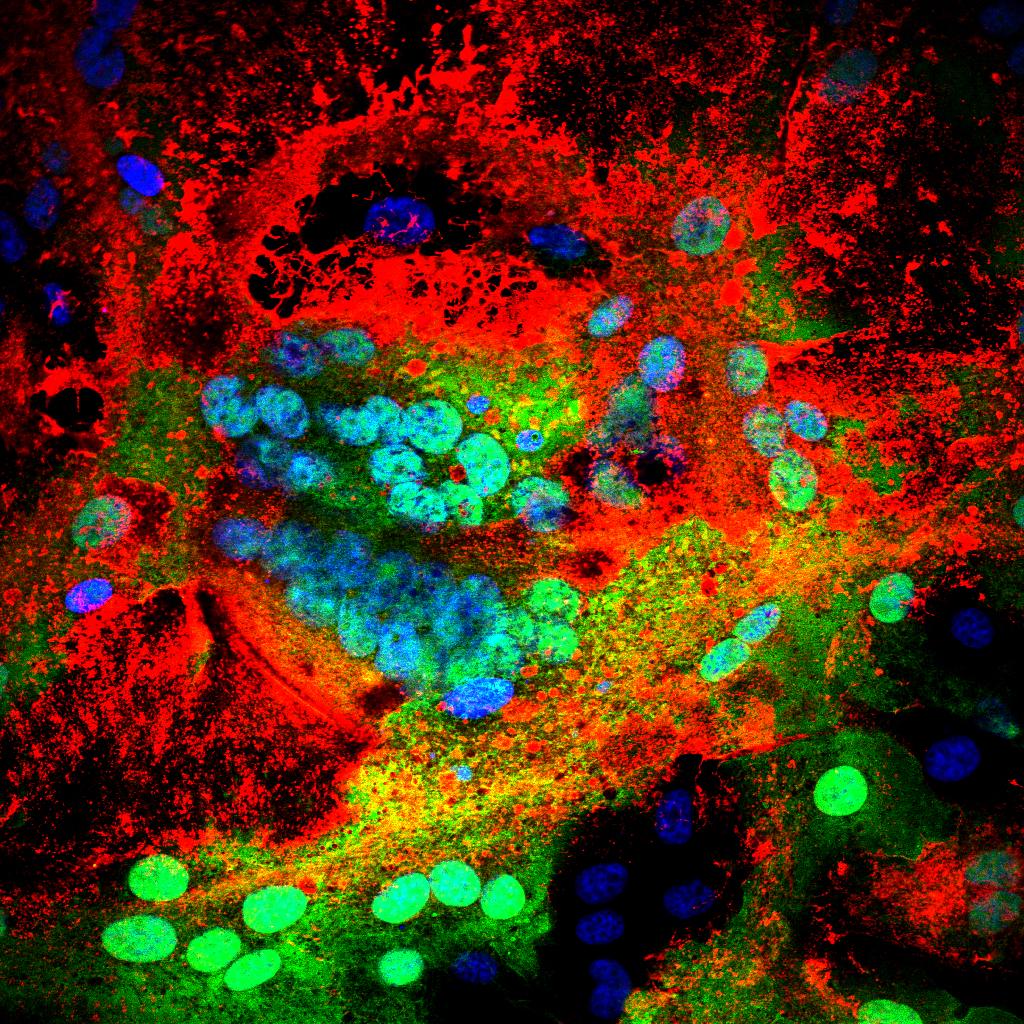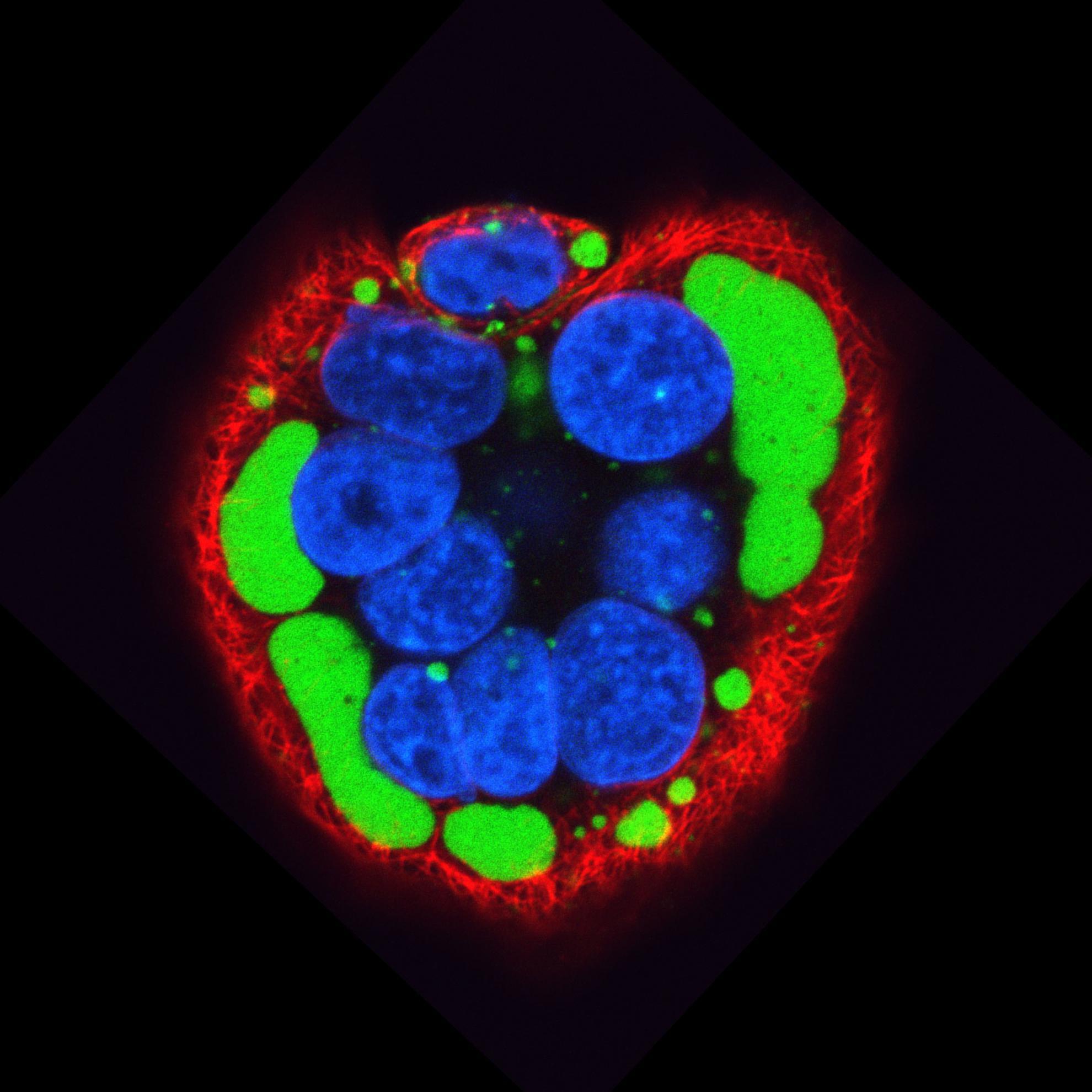Morbillivirus v proteins exhibit multiple mechanisms to block type 1 and type 2 interferon signalling pathways
Morbilliviruses form a closely related group of pathogenic viruses which encode three non-structural proteins V, W and C in their P gene. Previous studies with rinderpest virus (RPV) and measles virus (MeV) have demonstrated that these non-structural proteins play a crucial role in blocking type I (IFN?/?) and type II (IFN?) interferon action, and various mechanisms have been proposed for these effects. We have directly compared four important morbilliviruses, rinderpest (RPV), measles virus (MeV), peste des petits ruminants virus (PPRV) and canine distemper virus (CDV). These viruses and their V proteins could all block type I IFN action. However, the viruses and their V proteins had varying abilities to block type II IFN action. The ability to block type II IFN-induced gene transcription correlated with co-precipitation of STAT1 with the respective V protein, but there was no correlation between co-precipitation of either STAT1 or STAT2 and the abilities of the V proteins to block type I IFN-induced gene transcription or the creation of the antiviral state. Further study revealed that the V proteins of RPV, MeV, PPRV and CDV could all interfere with phosphorylation of the interferon-receptor-associated kinase Tyk2, and the V protein of highly virulent RPV could also block the phosphorylation of another such kinase, Jak1. Co-precipitation studies showed that morbillivirus V proteins all form a complex containing Tyk2 and Jak1. This study highlights the ability of morbillivirus V proteins to target multiple components of the IFN signalling pathways to control both type I and type II IFN action
Back to publications

